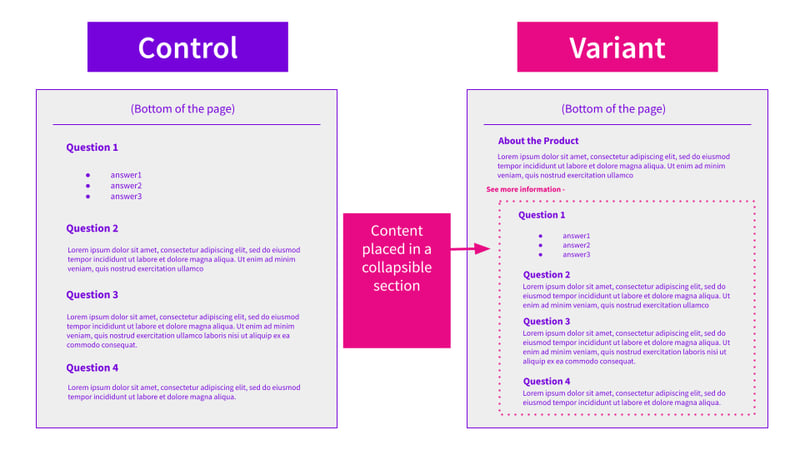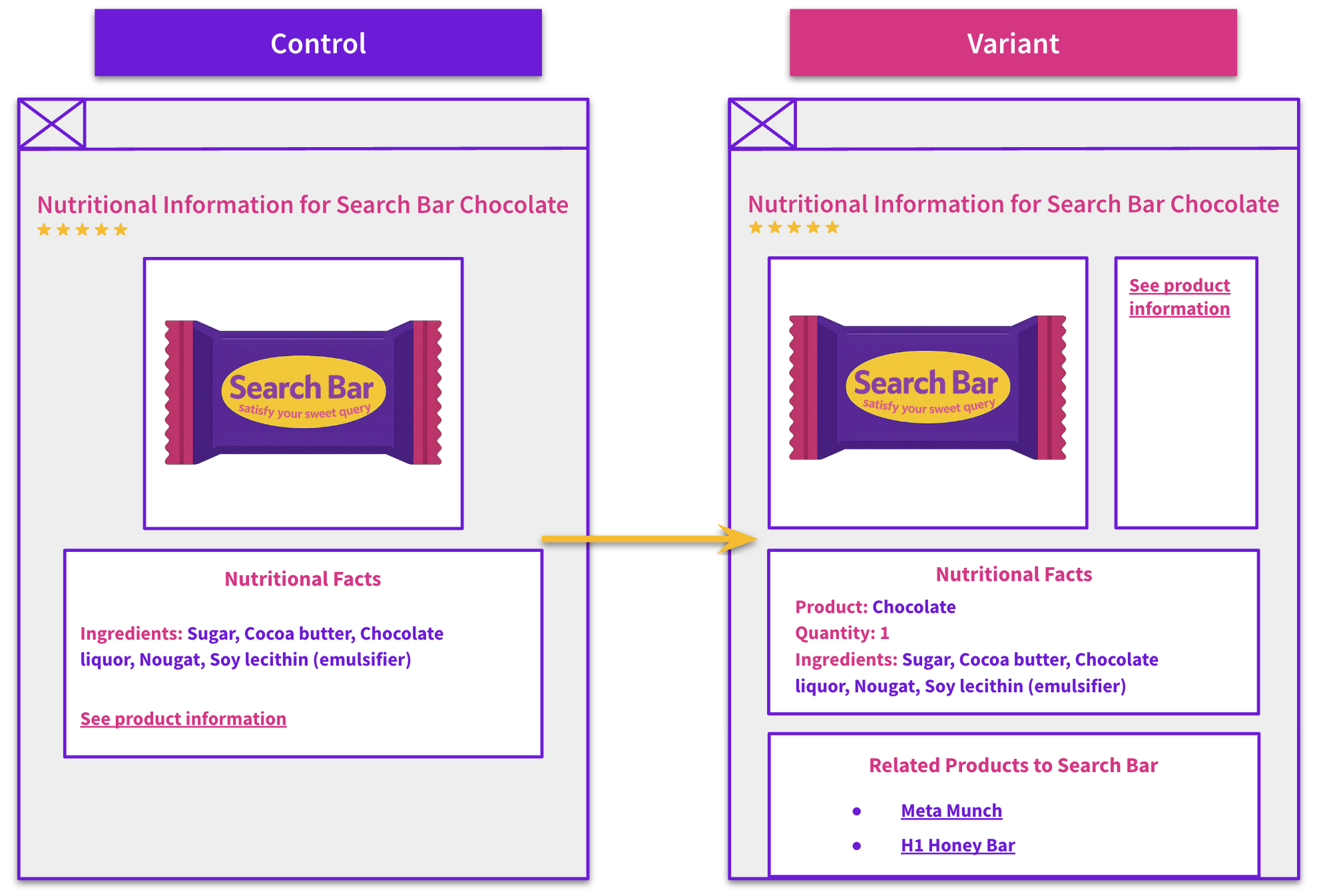Start here: how our SEO split tests work
If you aren't familiar with the fundamentals of how we run controlled SEO experiments that form the basis of all our case studies, then you might find it useful to start by reading the explanation at the end of this article before digesting the details of the case study below. If you'd like to get a new case study by email every two weeks, just enter your email address here.
In this week’s #SPQuiz we asked our followers what they thought the impact on organic traffic would be when taking content on the page and putting it into a collapsible section.
Here is what they thought:
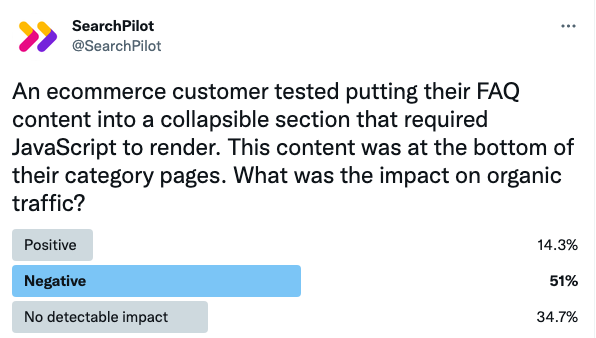
The Case Study
An ecommerce customer’s category pages were set to have more content added to them, so their UX team requested the existing FAQ content to be put into a collapsible section as a way to minimize the amount of content at the bottom of the page on the initial page load.
Based on a previous test at SearchPilot, our customer was aware that there was a potential risk to organic traffic by collapsing this content, so they wanted to test the change first. Although there was a chance this test was negative, they also had a couple of reasons to believe this change might benefit organic traffic.
Placing the FAQ content within a collapsible section could improve the user experience of that page by enhancing its performance. Although at SearchPilot there have been tests that suggest otherwise, Google has repeatedly said that content hidden for UX shouldn’t be weighted any less.
Here is a comparison of a control page vs. a variant page:
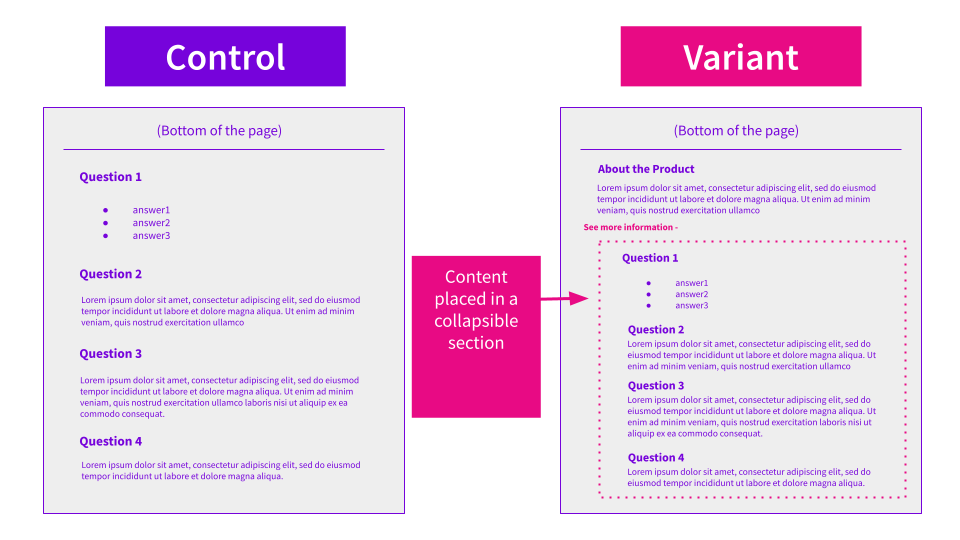
So how did this experiment perform?
The chart below shows the impact of this test on organic sessions for the search results pages:
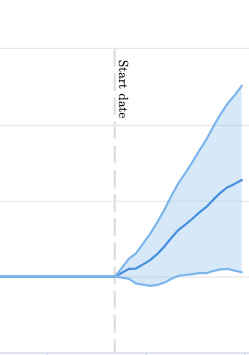
This test had a positive impact on organic traffic, leading to a +6% uplift!
As mentioned before, we’ve written about a similar experiment in the past where the result was positive when content was pulled out of tabs. Generally, our tests have shown websites perform better for organic traffic when content is displayed on the page without rendering JavaScript, so this outcome was surprising.
One key difference between this test and our previous test was that this content was below the fold. The intent of the content was also different. In our past case study, the content hidden in tabs was information such as ingredients, nutrition, and reviews.
Those differences might have meant that the content placed in a collapsible section in this test was less critical to existing rankings than the content hidden in tabs in our previous case study.
For this test, there was also evidence that placing the content in a collapsible section improved page speed on mobile. That might have also contributed to the positive uplift.
The fact this result was a counter to what we expected is an essential reminder that we should constantly challenge our assumptions and that when it comes to testing, there are no absolutes. The same changes often produce different results on various websites so always test if you can.
To receive more insights from our testing, sign up for our case study mailing list, and please feel free to get in touch if you want to learn more about this test or our split-testing platform.
How our SEO split tests work
The most important thing to know is that our case studies are based on controlled experiments with control and variant pages:
- By detecting changes in performance of the variant pages compared to the control, we know that the measured effect was not caused by seasonality, sitewide changes, Google algorithm updates, competitor changes, or any other external impact.
- The statistical analysis compares the actual outcome to a forecast, and comes with a confidence interval so we know how certain we are the effect is real.
- We measure the impact on organic traffic in order to capture changes to rankings and/or changes to clickthrough rate (more here).
Read more about how SEO testing works or get a demo of the SearchPilot platform.
